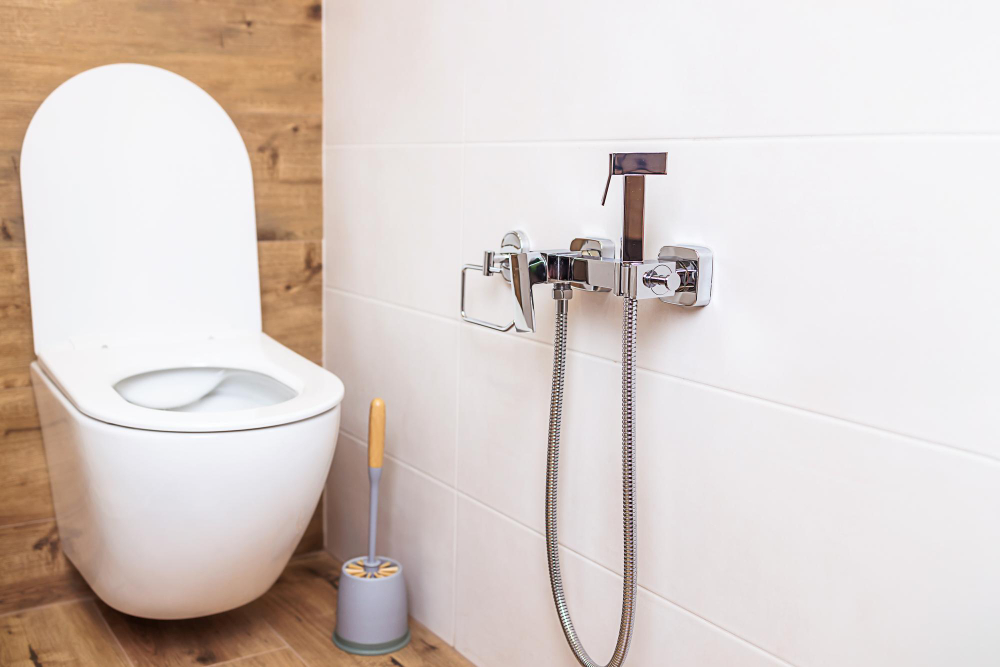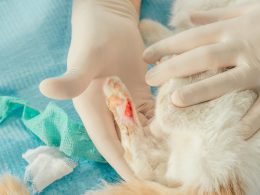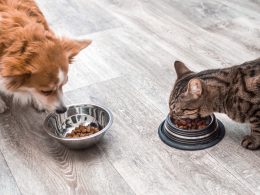The clumping ability of flushable cat litter is inferior to that of clay litter. And that’s important if you want to maintain your litter box free of litter. Modern clay litter has the advantage of clumping around urine, making it simple to identify and remove. In addition, you’ll spend less time cleaning your litter box since the clumping inhibits urine from dispersing throughout the container. If you use clay or silica-based cat litter, you should never flush it down the bathroom sink. Over time, the accumulation of debris in the pipes can cause clogs that you may not detect at first. In addition, there will be thousands of dollars in repair costs if enough cat litter is flushed down the toilet, and that’s before you consider the time and effort it will take to expose the pipes and switch them out. You should always use two bags when disposing of used kitty litter to ensure that no bacteria or parasites from the feces make their way into your home or the environment. Using this method, you won’t have to spend any more time or money than if you just flushed the contents of the litter box down the toilet to get rid of them. If you’re planning on using a natural, flushable cat litter, you may also want to rethink your decision. Avoid flushing cat litter to avoid clogging your pipes and harming the environment, as it is advisable to avoid doing so.
Can Kitty Litter Go in the Toilet?
Even though your kitty litter is advertised as safe for pipes, flushing it raises the risk of public infection by allowing Toxoplasma gondii to enter the water system. To summarize, flushing kitty litter down the toilet is never a good idea.
Cat feces, which you always clean out of the litter box, are where this parasite is transmitted. Because the sewage system is continually being recycled and reused, flushing it down the toilet will spread the parasite.
It would extend your piping’s lifespan if you did not flush your cat’s litter or excrement down the toilet, although it may initially seem to work. If it gets into your pipes, it can clog them and even harm your septic system. It is important to remember that the microorganisms in your septic system are delicately balanced to digest only human waste and biodegradable tissue.
Flushable litter has a greater chance of causing an allergic reaction in your cat. Cats prefer clay-based litter, and health problems rarely arise from using it. Despite this, cats are more susceptible to allergies to wheat and maize products.
Do not flush any cat waste, even if you remove it from the litter. Septic systems are overworked by the addition of cat litter, even if the litter is all-natural or organic, such as corn, pine, or wood chips. This could cause a disastrous failure of the septic system. Therefore, Flushing kitty litter is a bad idea at all times.
Can You Dump Cat Litter Down the Drain?
Drains can quickly become clogged with cat litter. This is because water causes it to form clumps and expand. As a result, it will quickly become clogged if it goes down the drain.
Using a flushable cat litter may result in clogs, whereas using a non-flushable litter would. This is just one of many reasons why it is best to avoid flushing your cat’s litter down the toilet or a sink or shower drain.
It is possible to entirely halt water flow down the drain due to clogs caused by litter. Fortunately, you won’t have to worry about damaging the plumbing fixture to clear the clog.
Litter that is made of clay cannot be flushed. This is because the clay could ruin your plumbing. The packaging of some biodegradable litters, on the other hand, claims that they are flushable.
As a cat owner, picking the correct litter for your pet can be challenging: your cat will tell you if they enjoy their litter depending on how often they use it and how much they dig into it. Unfortunately, the best way to dispose of your used cat litter has remained the same for millennia: throw it away.
You can use two sorts of augers or snakes if you’re unsuccessful with the plunger: one for toilets and another for other fixtures. Crank the lever to twist the head and eat through the clog after feeding the snake into the drain until it won’t go any further.
Does Flushable Cat Litter Clog Pipes?
It’s common for cat owners to believe that flushable cat litter is better for the environment than typical clumping litter; yet, flushable litter can have far-reaching adverse effects on your plumbing and the world.
While flushable kitty litter is constructed of biodegradable materials, cat excrement may contain pathogenic bacteria that can affect human and animal health. In addition, when flushed, cat feces can penetrate sewer lines and pollute water supplies, resulting in sewage overflows.
It’s a prevalent belief that flushable litter is more environmentally friendly than clay-based litter, the most common type. Among the most popular types of litter are clumping litters, which absorb liquid and form scoopable drops. It’s less frequent than non-clumping litter, but these clay-based litters end up in the garbage, frequently in plastic bags, where they end up in landfills and cause other environmental problems.
The newer, water-saving toilets only use 1.6 gallons of water per flush, far less than the previous generation. But unfortunately, that’s not enough to get the kitty litter out of the container.
Then there’s the fact that cat excrement can be more brutal and drier. The primary function of kitty litter is to essentially “petrify” excrement. Cat waste, feces, and litter can damage your septic tank, leading to a costly repair bill.
Additionally, each flush increases water consumption and decreases environmental advantages, and cleaning the litter box takes longer. Also, compared to traditional clay-based clumping cat litter, flushable litter is more expensive. It may seem like a small price to pay for each bag, but it can save you a lot in the long run.
Does Drano Break Down Cat Litter?
When using drain cleaners like Drano, cat litter remains in the pipes since the chemicals can’t break them down. Disassembling the pipes to clear a clog can result in flesh burns if these substances splash back out of the drain.
When it comes to clogged drains and toilets, it’s virtually unavoidable. So Drano may be your first thought if you’re anything like most homeowners. But on the other hand, professional plumbers despise Drano because it can create more harm than good over time.
You may need pricey repairs down the road if you use Drano instead of contacting a plumber for routine drain cleanings. By continuing to read this article, find out what Drano is, how it works, and why plumbers advise against its use.
Sodium hydroxide is a common ingredient in fast-acting drain cleaners. Unfortunately, even though drain cleaners that claim to be “super-strong” contain sulfuric acid to remove clogs, neither will dissolve pine chips, maize, and wheat husks, nor clay.
It’s not simply the clog you were trying to clear that’s vulnerable to Drano’s corrosive effects. Drano will sit on top of a clog in your pipes and keep reacting and producing heat until the obstruction is removed. Your drains will be put under a lot of strain since the heat can cause PVC pipes to weaken and even collapse or break.
To continue cleaning the toilet, you’ll need to remove any cat litter that’s made its way into the pipes. A toilet snake can be used to dislodge the clumps of cat litter from the pipe.
How To Unclog a Drain Clogged with Cat Litter?
- Lift the drain stopper, plug, or basket out of the drain opening first to remove it. Next, lift it and put it away. The next step is to run the water until the drain is overflowing and the sink is full.
- The next step is to use a plunger to cover the sink’s drain hole. The rubber should be submerged in the water around the plunger.
- Press hard on the drain opening with the plunger head until it collapses while holding it by the handle. Pull it straight up after that.
- You’ll have to manually scoop the water out of the sink using a small container or cup. Then, fill a pail or a drain with the water you’re scooping up.
- You’ll need a hosepipe and a faucet. The other end of the hose should be inserted into the drain. To begin using the hose, turn on the water supply.
- The water accumulated in the sink can be scooped up and dumped into a pail if this doesn’t eliminate the clog.
- You can use a drain auger to get into the drainage aperture. When you feel any resistance, keep going down the drainpipe. The difficulty in moving forward indicates clogs.
- To clear the clog, turn the drill in a clockwise direction. To see if the clog has been eliminated, flush the drain with water.
- Set up a bucket under the sink drain trap and fill it with water. The sink drain is connected to the wall by a bent pipe called a trap.
- Adjustable wrenches can release the slip nuts keeping the trap in place on both sides. Next, make use of a long screwdriver to free the obstruction.
- Make sure the trap is reassembled. First, ensure the drain works appropriately by flushing it with a cup of water. Then, return the drain basket, plug, or stopper to its original position in the sink.














